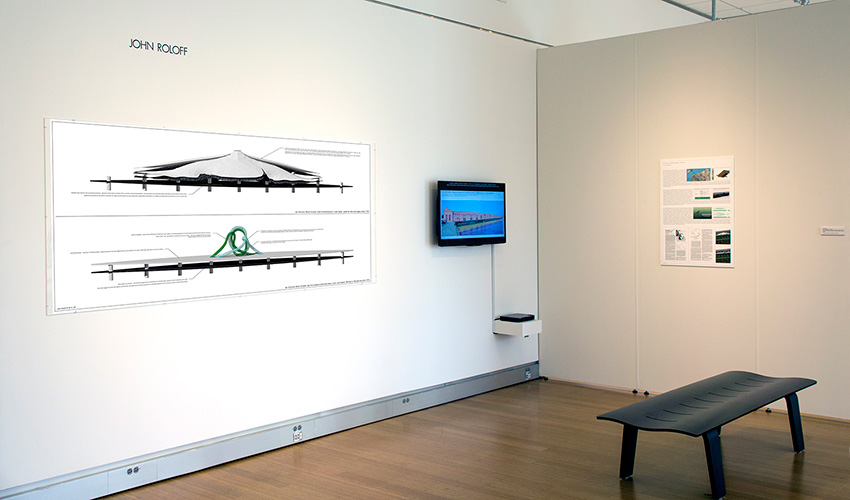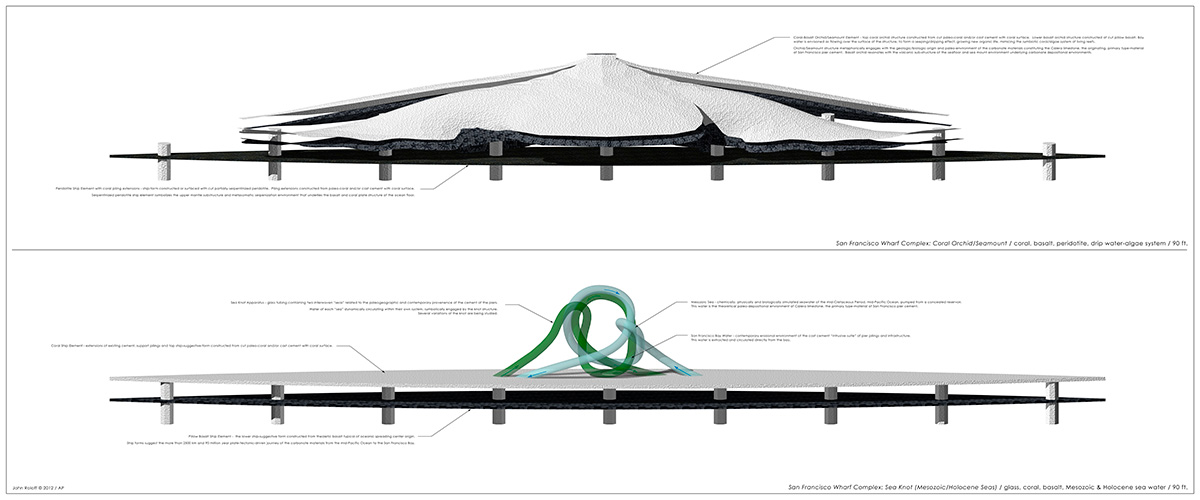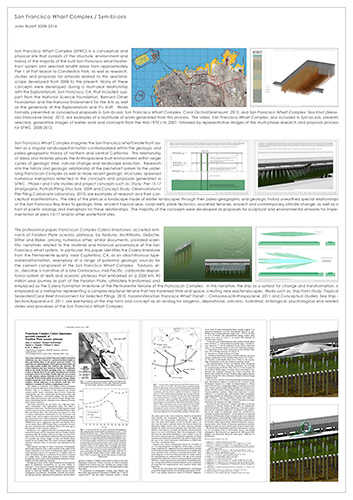San Francisco Wharf Complex / Sym-bi-osis / Text Panel - 2008-2014
San Francisco Wharf Complex (SFWC) is a conceptual and physical site that consists of the structure, environment and history of the majority of the built San Francisco wharf/waterfront system and selected landfill areas from approximately Pier 1 at Fort Mason to Candlestick Park, as well as research, studies and proposals for artworks related to this sea/landscape developed from 2008 to the present. Many of these concepts were developed during a multi-year relationship with the Exploratorium, San Francisco, CA, that included support from the National Science Foundation, Bernard Osher Foundation and the National Endowment for the Arts as well as the generosity of the Exploratorium and it’s staff. Works formally presented as conceptual proposals in Sym-bi-osis: San Francisco Wharf Complex: Coral Orchid/Seamount, 2012, and San Francisco Wharf Complex: Sea Knot (Mesozoic/Holocene Seas), 2012, are examples of a multitude of works generated from this process. The video, San Francisco Wharf Complex, also included in Sym-bi-osis, presents selected, generative images of earlier work and concepts from the mid-1970’s to 2007, followed by representative images of the multi-phase research and proposal process for SFWC, 2008-2012.
|
San Francisco Wharf Complex imagines the San Francisco wharf/waterfront system as a singular landscape/formation contextualized within the geologic and paleo-geographic history of northern and central California. This relationship of ideas and histories places the Anthropocene built environment within larger cycles of geologic time, natural change and landscape evolution. Research into the history and geologic relationship of the pier/wharf system to the underlying Franciscan Complex as well as more recent geologic structures, spawned numerous metaphors reflected in the concepts and proposals generated in SFWC. Phase I and II site studies and project concepts such as: Study: Pier 15-17 Stratigraphic Portrait/Piling Structure, 2009 and Concept Study: Observatorium/Pier Piling Carbonate Laboratory, 2010, are examples of research and their conceptual manifestations. The idea of the piers as a landscape made of earlier landscapes through their paleo-geographic and geologic history unearthed special relationships of the San Francisco Bay Area to geologic time, ancient tropical seas, coral reefs, plate-tectonics, accreted terranes, ancient and contemporary climate change, as well as a host of poetic analogs and metaphors for those relationships. The majority of the concepts were developed as proposals for sculptural and environmental artworks for implementation at piers 15/17 and/or other waterfront sites. |
The professional paper, Franciscan Complex Calera limestones: accreted remnants of Farallon Plate oceanic plateaus, by Tarduno, McWilliams, Debiche, Stilter and Blake, among numerous other, similar documents, provided scientific narratives related to the material and historical provenance of the San Francisco wharf system. In particular, this paper identifies the Calera limestone from the Permanente quarry, near Cuptertino, CA, as an allochthonous type-material/formation, exemplary of a range of potential geologic sources for the cement component of the San Francisco Wharf Complex. Tarduno, et. al., describe a narrative of a late Cretaceous, mid-Pacific, carbonate depositional system of reefs and oceanic plateaus that embarked on a 2500 km, 90 million year journey as part of the Farallon Plate, ultimately transformed and emplaced as the Calera Formation limestone of the Permanente Terrane of the Franciscan Complex. In this narrative, the ship as a symbol for change and transformation, is employed as a metaphor representing a complex sea/land terrane that has traversed time and space, creating new sea/landscapes. Works such as: Ship Form Study: Tropical Seawater/Coral Reef Environment for Selected Pilings, 2010, Foraminifera/San Francisco Wharf Transit :: Cretaceous/Anthropocene, 2011 and Conceptual Studies: Sea Ship - Section/Apparatus II, 2011, are exemplary of the ship form and concept as an analog for orogenic, depositional, volcanic, turbidinal, ontological, psychological and related states and processes of the San Francisco Wharf Complex. |


